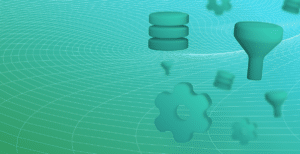Reconciling payments made to and from your bank account to customer and vendor invoices can be a time consuming and frustrating task.
The Bank Reconciliation functionality introduced in Microsoft Dynamics NAV 2015 made improvements to the bank process. This has now been further enhanced in Dynamics NAV 2017, with the Payment Reconciliation Journal. The payment reconciliation functions now provide an automated solution and simple method of applying payments into your bank, to your Customers and Vendors.
The Payment Reconciliation Journal allows you to import bank transaction files for payments that have been made to, or from, your bank account then automatically apply the payments to their related open entries. The automatic applications provide suggestions, each rated with a “Match Confidence level”, that can still be manually adjusted until you post the lines in the journal.
The Bank Reconciliation functionality reduces the amount of duplication, as you no longer need to post the customer payment and the bank reconciliation in two different processes.
Not only does the system reconcile against the bank account, the payment journal will also create the payment against the customer and apply the balance to the invoice—combining several payment processes into one screen.
Another key feature has been introduced to allow mapping text from the bank statement to general ledger accounts. You can associate text on payments with debit, credit and balancing accounts, so reoccurring payments are automatically mapped to certain accounts. This way you can ensure regular fees are always posted to a specific general ledger account.
Overall, the benefit we get from using this process is a decrease in time and effort to achieve effective payment reconciliation and application. This reduces the amount of duplication, as you no longer need to post the customer payment and the bank reconciliation in two different processes.







